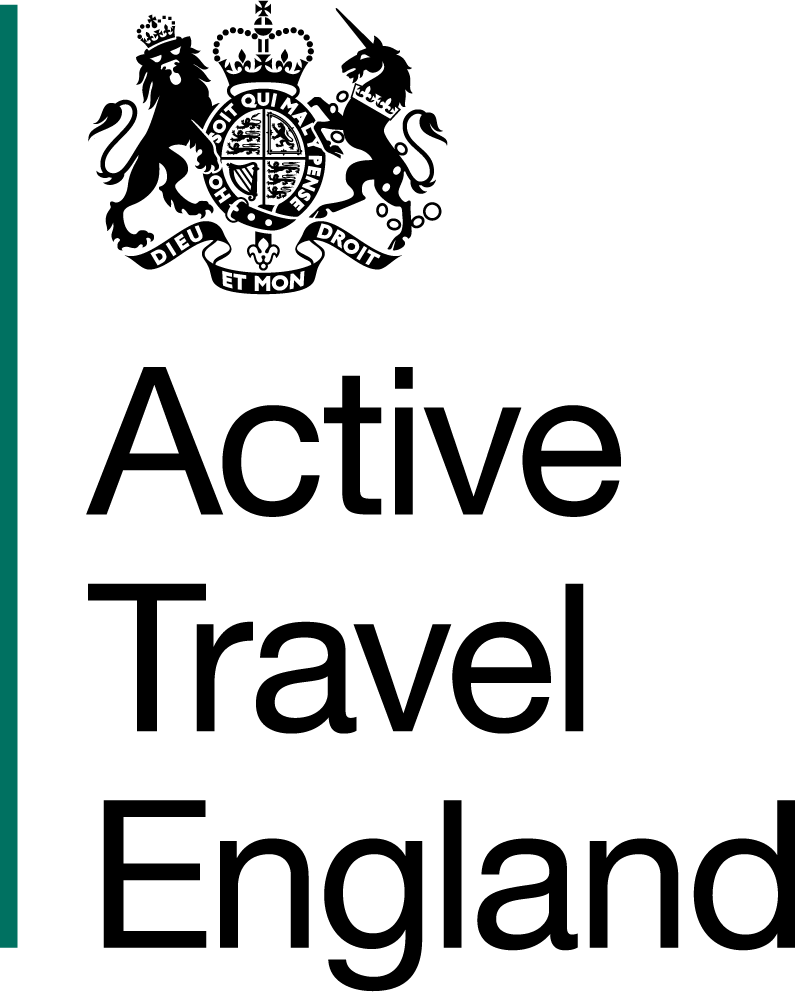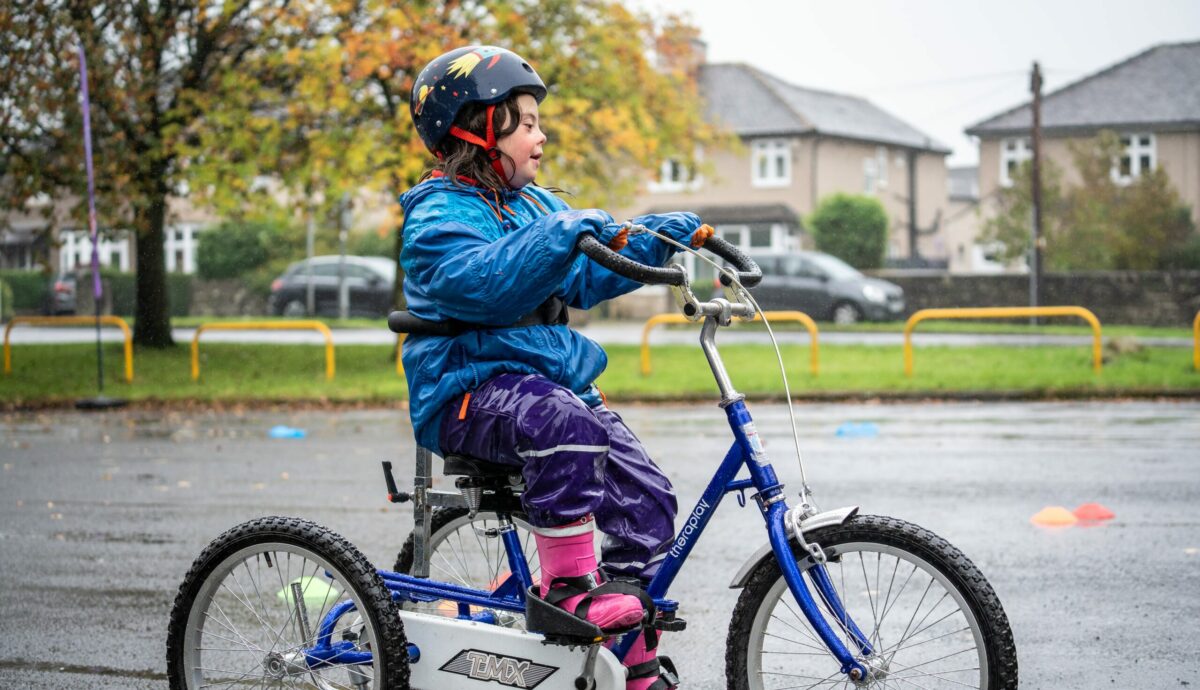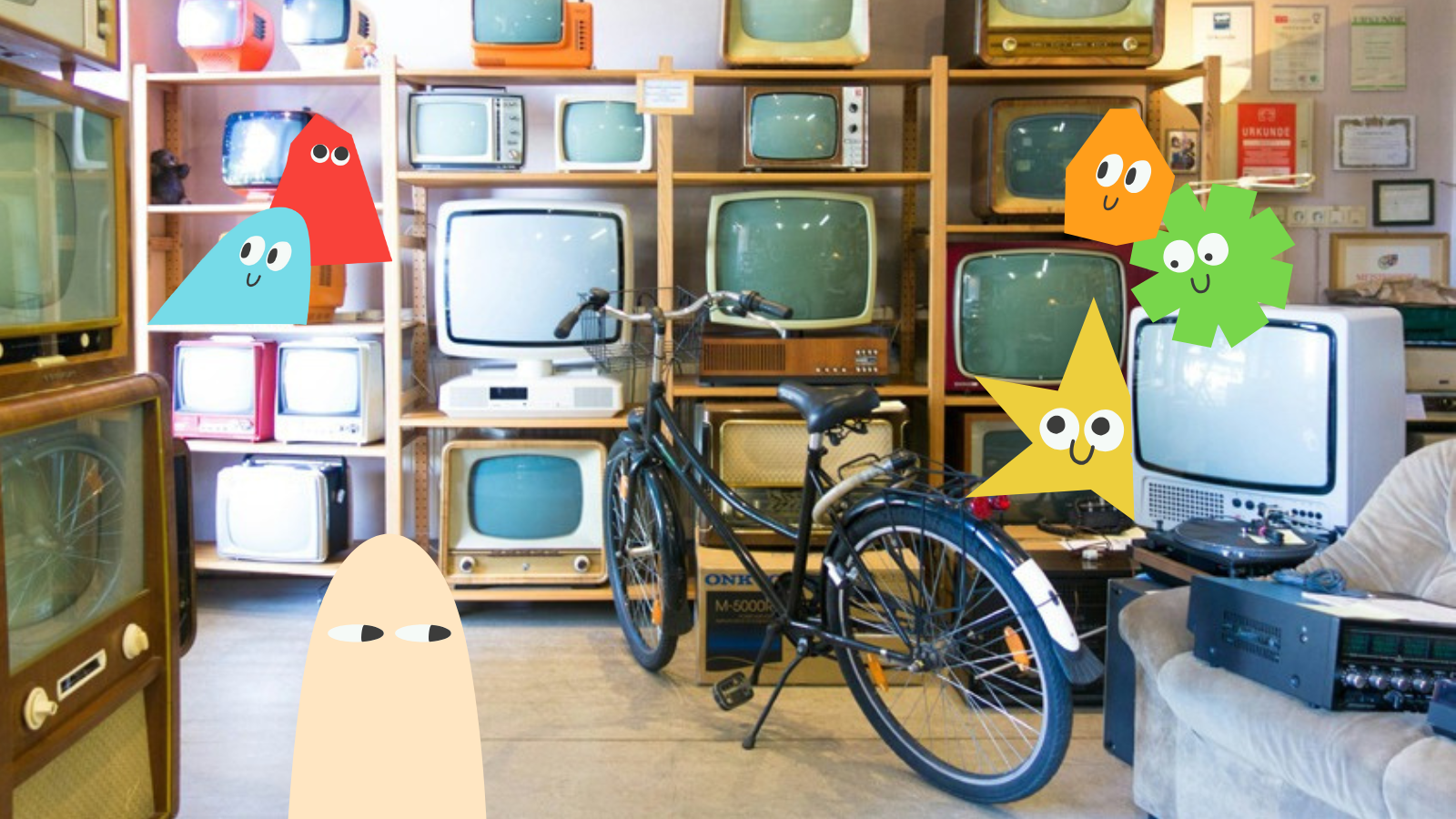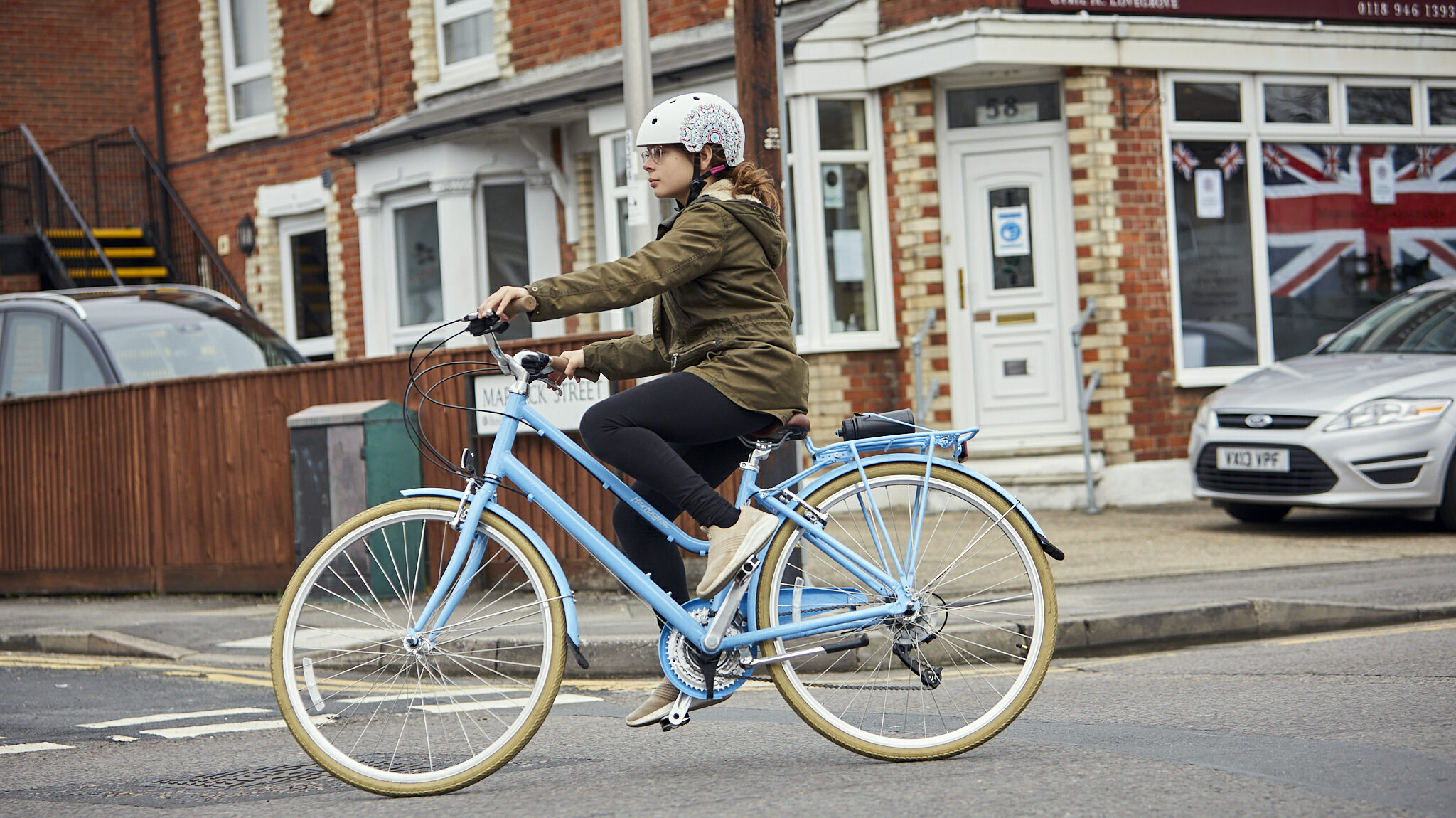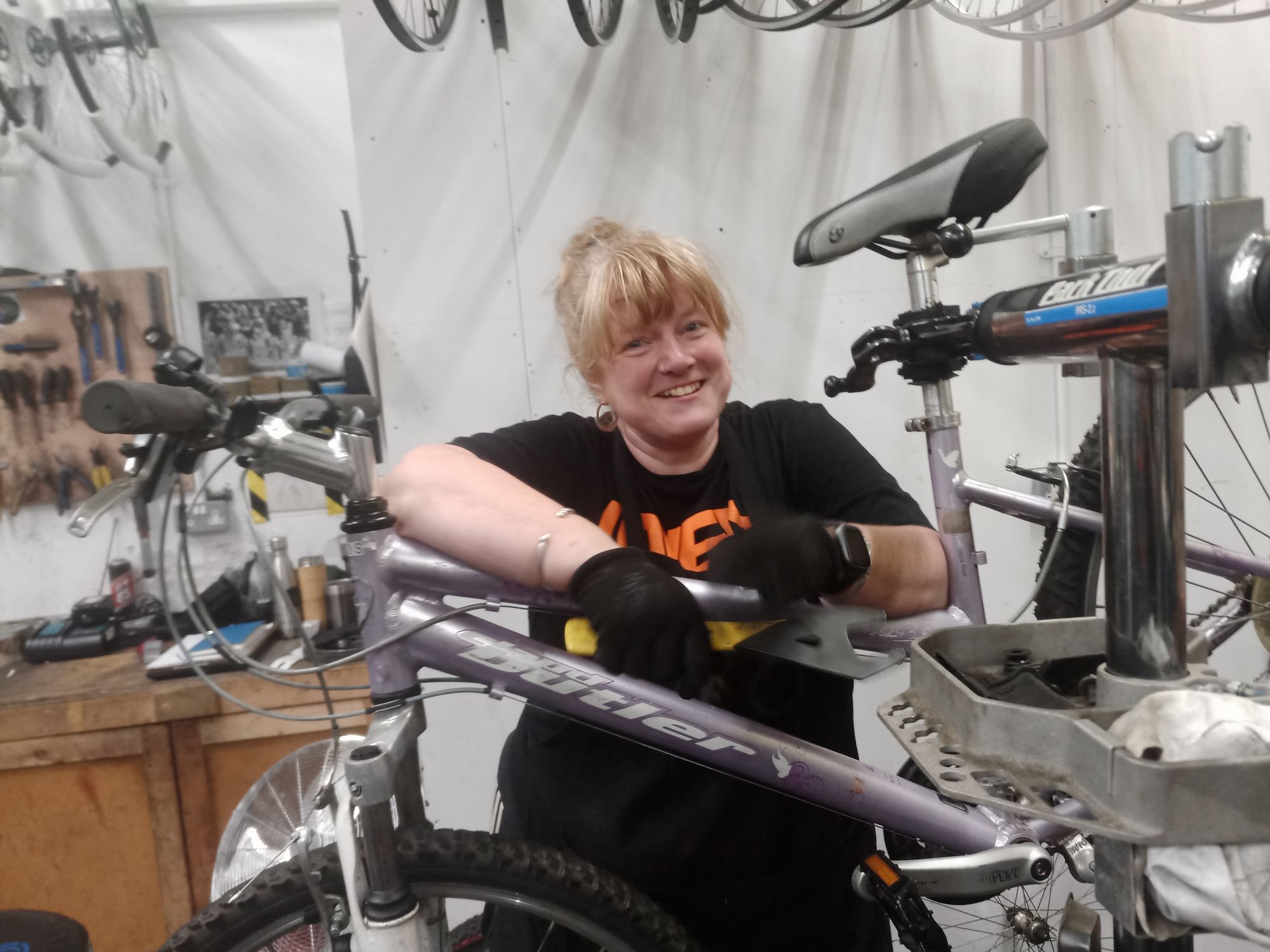Once you’ve worked out which cycle types you like to ride, you’ll need to think about cost, storage, cargo and your local infrastructure to let you decide which cycle to buy.
Remember, as long as you enjoy riding it, the best bike for you is the one you have!
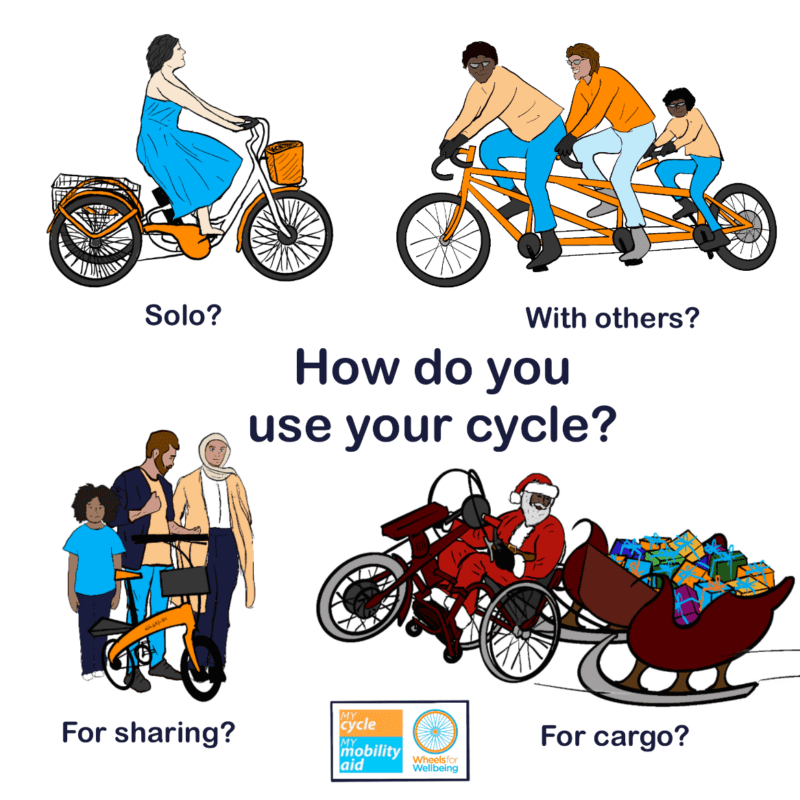

Cost
Cost is the biggest factor affecting cycle choice for many of us.
Many Disabled people will need cycles which are very expensive, especially if the cycle needs e-assist. For some people in work, schemes such as Access to Work and Cycle to Work may help. Ask your local inclusive cycling centre about long-term loan schemes and any other grant funding which may be available.
Alternatively, cycles can be bought cheaply or even free from organisations like Lifecycle, or from local community groups.
Sharing
Who will be using your cycle? Folding cycles and low step-through models including many cargo/child-carrying cycles can be shared easily by people of very different sizes.
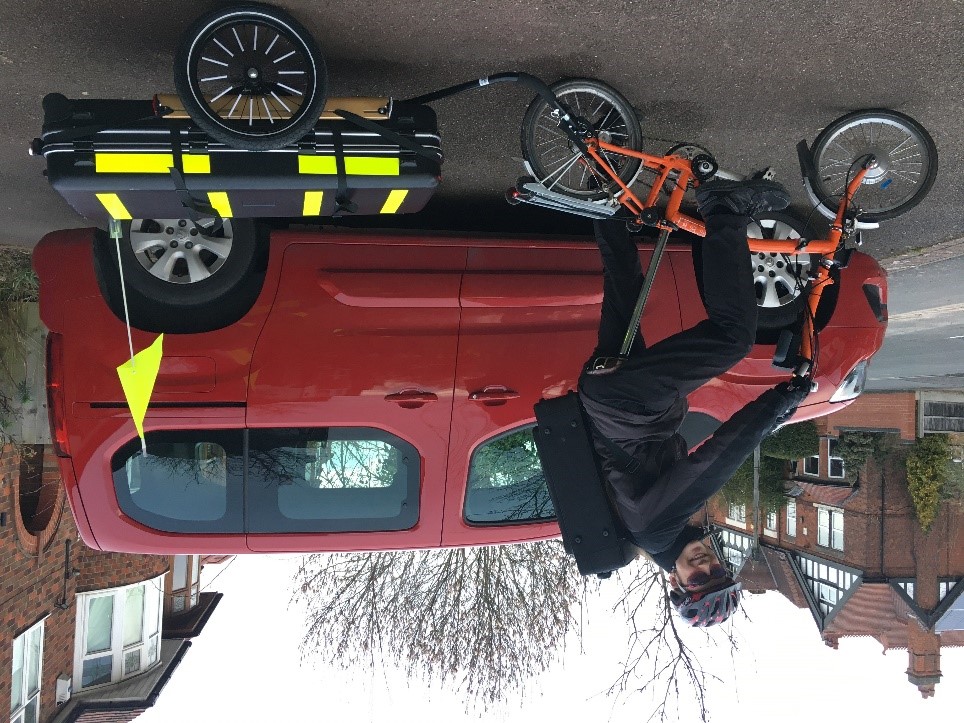

Folding cycles can be a flexible transport option for many people – and for cargo too!
Storage and parking
Do you have a convenient secure level-access store near to your home, or will you have to manoeuvre your cycle through difficult spaces? Will it be left unsheltered from weather and at higher risk of theft for long periods?
Folding cycles can be a good option when you have limited storage. Some housing providers and local authorities may install secure cycle stores if you ask, but some are resistant to making provision for non-standard cycles.
If cycle storage is provided but is not accessible for you or suitable for the sort of cycle you need, if you are Disabled you may be able to make a claim for discrimination under the Equality Act (2010).
Remember to think about whether you’ll be able to park your cycle at places you want to visit, too.
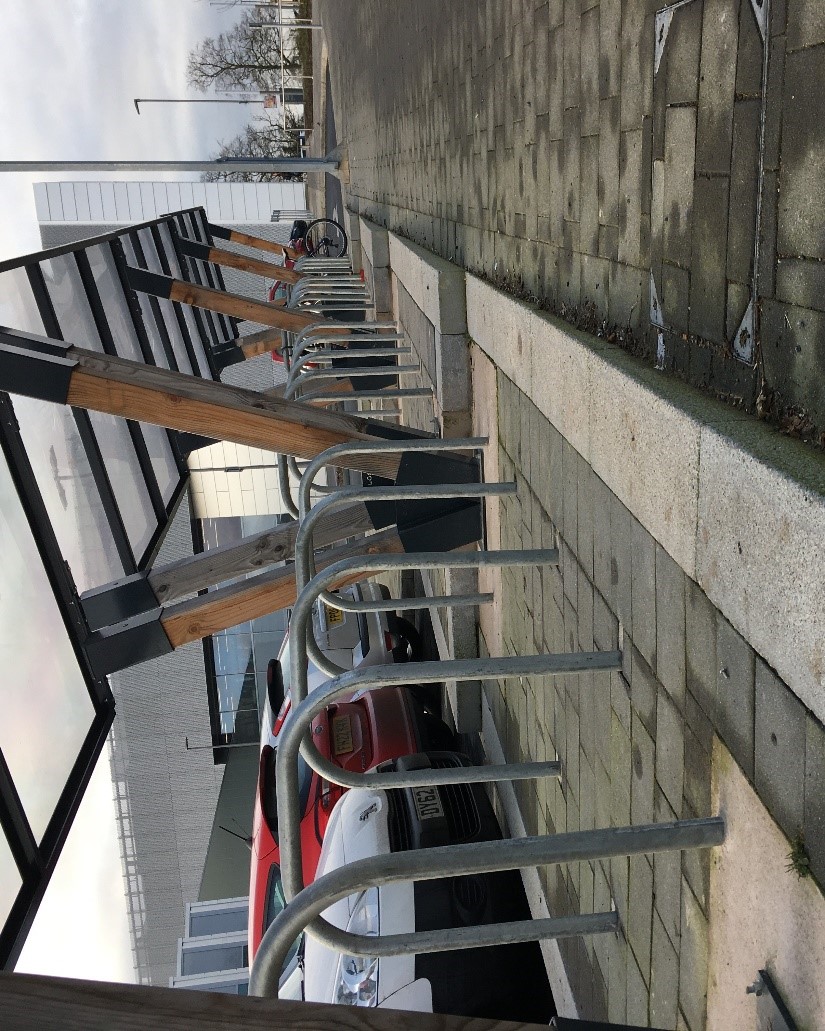

Stepped access and narrow stand spacing make this new cycle parking inaccessible
Local infrastructure
There’s no point having a cycle if there’s nowhere you can ride it! Barriers on cycle routes are sadly all too common. If you want to buy a larger cycle or a cycle you can’t lift by yourself, see if you can loan it first to check it will fit down the routes you want to use.
Similarly to the situation with storage, discriminatory barriers are illegal under the Equality Act (2010). If you can find out who is responsible for the barriers, you can ask to have them removed. If you are Disabled, you can make a discrimination claim against the landowner under the Equality Act to have the barriers removed, but this is not an easy option.
Sustrans are working to remove all the discriminatory barriers on the National Cycle Network removed.
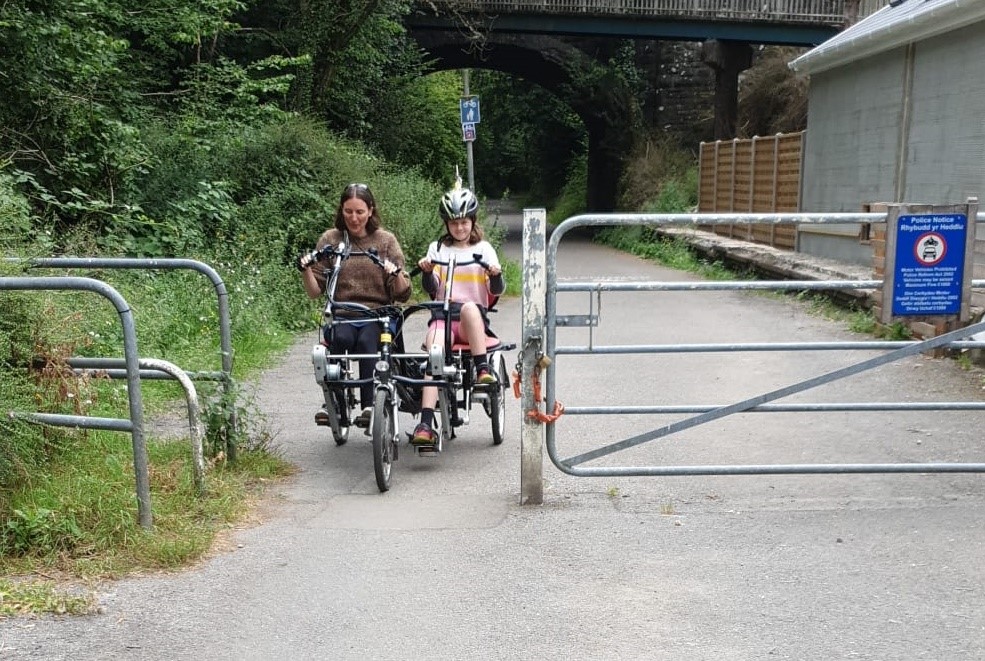

Larger cycle types can be used when access barriers are removed
Maintenance and repairs
Can you repair and maintain your cycle by yourself?
If not, ask around for businesses who will be able to look after your cycle type, especially if you’re using a less-common cycle type.
A local mobile cycle repair or breakdown service can be really helpful especially for emergencies or minor repairs like punctures.
If you can’t walk far or repair your cycle if it breaks, carry phone numbers of taxi firms that will pick you up – or better still, taxi firms that will transport both you and your cycle.
Transport
Do you need to take your cycle on a bus or train? You can book luggage assistance via Passenger Assist if you need help to get a folding cycle onto a train. At many stations you should be able to just turn up and get assistance, too.
Will you ride from your home or does your cycle need to fit into a vehicle or onto a roof rack, hatchback or towbar-mounted cycle rack?
Think about whether you’ll need to lift, fold or secure your cycle, and what transport options work with different cycles.
Security and insurance
Will your cycle be left in a high-risk location? What sort of locking and locations does your insurer require? Locking to an unmoveable object with a gold-standard Secured by Design cycle lock is generally a minimum insurance requirement for more expensive cycles being left unattended outdoors. These locks are heavy – make sure you can transport and use your lock, or think about ways to bring your cycle indoors with you: Again, folding cycles have an advantage here.
All these tips could make choosing a cycle seem difficult. It’s usually not! For many people, almost any cycle type will be a fun and useful way to get around. Hopefully, these tips will help those of us who need more specific cycle types or fitting find the perfect for each of us, too.
Read the rest of the series
Read part one of Wheels For Wellbeing’s top tips on choosing an accessible cycle
You can also read their guide on choosing a cycle with e-assist
About Wheels for Wellbeing
Wheels for Wellbeing is a Disabled People’s Organisation working to make cycling, wheeling and walking accessible for everyone.
Blog author Kate Ball is a Disabled cyclist, parent, carer and a Campaigns and Policy Officer at Wheels for Wellbeing. Her favourite cycle is a Circe Helios tandem which is really her daughter’s – but which all the family love to ride.
Useful organisations
Wheels for Wellbeing: https://wheelsforwellbeing.org.uk/
Wheels for All: https://wheelsforall.org.uk/
Get Cycling: https://www.getcycling.org.uk/
Cycling UK: https://www.cyclinguk.org/
Sustrans: https://www.sustrans.org.uk/
Lifecycle: https://www.lifecycleuk.org.uk/
